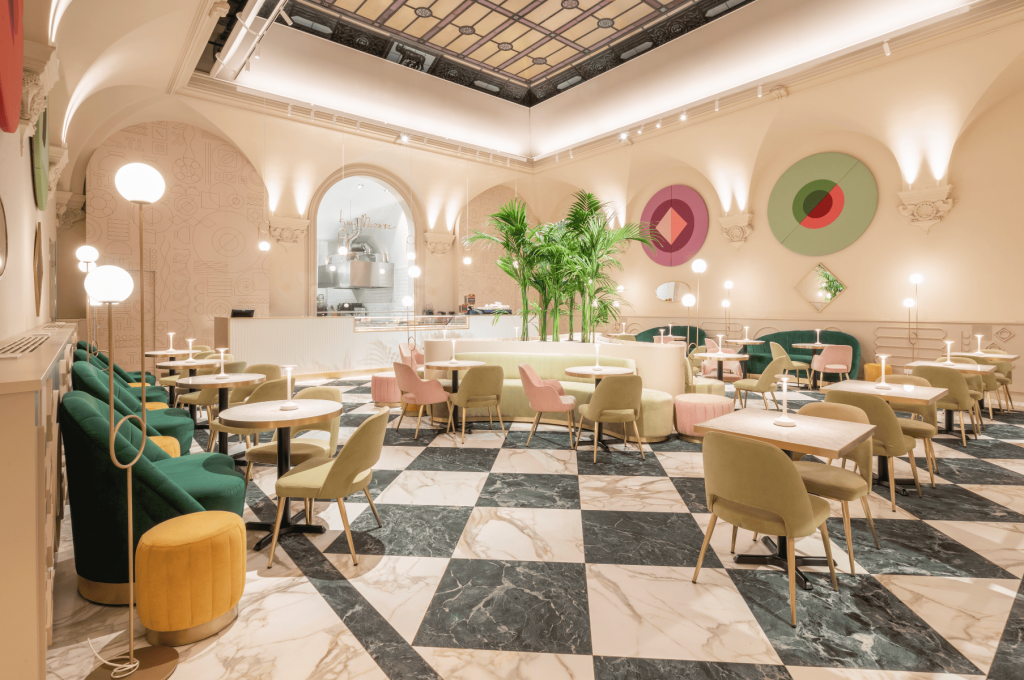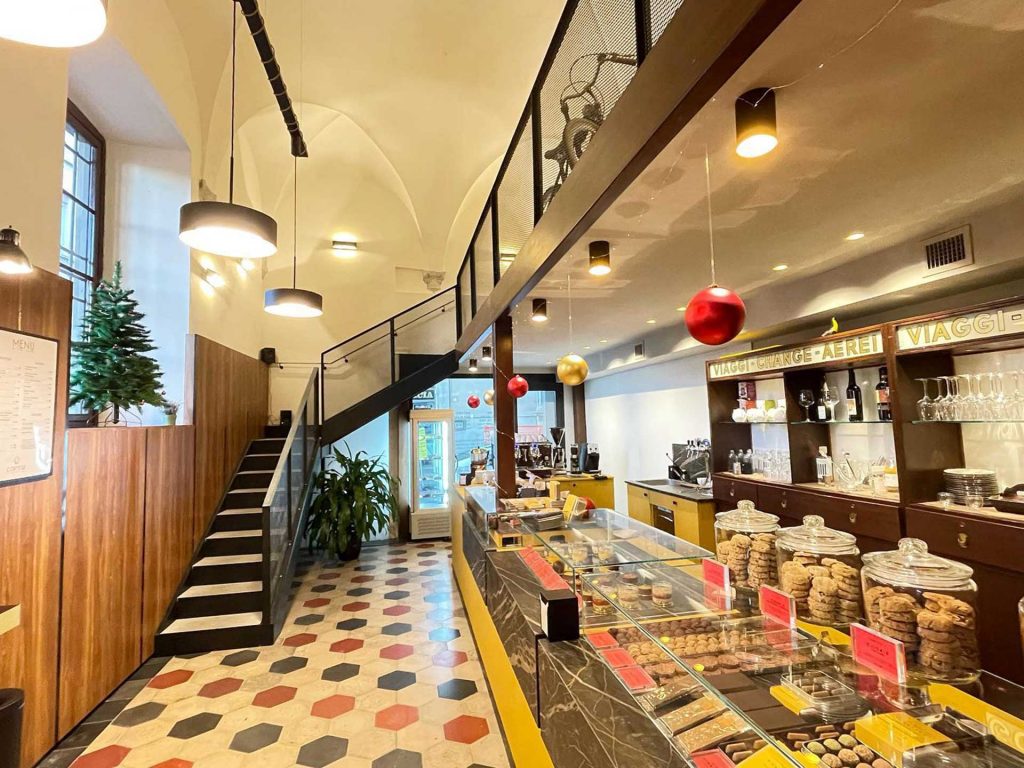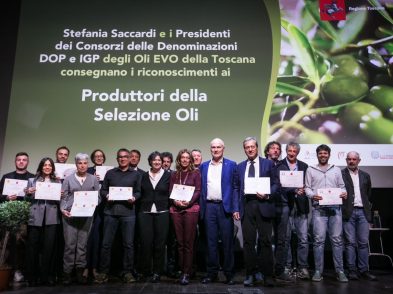Forget fine dining! High-end bakeries are where it’s at in Florence right now. We follow our sweet tooth to two of the most talked-about pasticceria shop openings as well as returning to time-honoured favourites.

Living in the cradle of the Renaissance, it’s easy to relate almost everything back to the days of Medici opulence and bloodshed. Street names, piazzas, bridges, churches and surnames all allude to the city’s history. When it comes to the art of delicate pastries, however, Florence’s role is often somewhat forgotten. We think of Marie Antoinette when we think of macarons, but the original recipe for this almond and egg-white biscotti was brought over to the French aristocracy by Catherine de’ Medici in 1533, ahead of her wedding to the future king of France. Then there’s choux pastry, a staple of old-fashioned French patisserie, which is also believed to have come to France with Pantarelli, Catherine de’ Medici’s head chef, who invented the dough in 1540. The list goes on, with custards, marmalades, mousses and, of course, gelato all starting their culinary stories in the Tuscan city.
Fortunately for us, the tradition for high-end dolci has continued in Florence more or less ever since. Take Caffè Gilli in piazza della Repubblica for example, still one of the most popular spots for people-watching over a delicate cake and perfectly frothed cappuccino. This historic salotto (cake parlour) dates back to a Medici-era Swiss family, who founded it in 1733. As Florence pulls out of the pandemic once more, we can’t help but notice a wave of new high-end pasticcerie opening up.
Alta Pasticceria at Galleria Iginio Massari

One of the most anticipated new cake shops is Iginio Massari’s new place, adjoining the recently refurbished Helvetia & Bristol hotel. “Quality without compromise” is the motto Massari stamps on his outposts in Milan, Verona, Turin and Brescia, and it has won him a reputation of one of the greatest pastry maestri in the country.
Massari, now in his late seventies, is famous for his appearance in MasterChef, but is in fact better known across Italy for his inimitable panettone. He believes mastering the Italian Christmas-time panettone is the ultimate test for a pastry chef, and the legions of disciples who queue to pre-order his artisanal panettone each year are testament to the care and attention that goes into the long process of making it. As Easter approaches, the team are busy preparing colomba and we’re urged to place our orders ASAP if we want to get our hands on one.
For the new branch of his patisserie empire, Iginio Massari has chosen a classically beautiful space within a historic bank, the original high stained glass ceiling still in place. “For some time now, we have been thinking about Florence as a natural landing place for our brand.” Massari explains. “The city is an expression of pure and eternal beauty and we are truly honoured to be able to contribute to this important cultural salon with a meeting place where we want our Florentine friends, and not only, to feel at home.“
What to order
Their take on the Roman maritozzo, a soft, leavened brioche dough stuffed with sweet crème patissière and whipped cream.
Natural sugar at Cortese Café 900

Inside Museo Novecento, chef Vito Cortese is taking on the concept of Italian dolci from a very different but equally exquisite angle. At Cortese Café 900, absolutely everything is naturally vegan, gluten free, raw and without refined sugar. It’s a remarkable feat for a city and country that loves traditional sweet treats so much. Cortese ran a crêpe stand in Florence for over a decade before deciding to change tack and reinvent traditional dolci. Above all, his aim is to highlight the natural ingredients without masking them behind sugar. “Take hazelnut, for example. When you have the finest hazelnuts from Piedmont you want to taste the exquisite complexity of their flavour, not simply to be overwhelmed by sugar.”
Entering Cortese 900 at the front of the contemporary art museum in piazza Santa Maria Novella, it’s not immediately obvious that the place has such a health-focused mission. “The idea is also to appeal to people who think they hate the idea of healthy snacks,” explains Samantha Di Guardo, who runs the front of house team and has travelled with Cortese around the world as he developed his unique methods. “We source whatever ingredients we can from Italy and Sicily: the best avocados, pistachios, mangoes and raspberries. So, if people come in looking for a regular croissant or cappuccino we can’t give it to them, but once they try our version they might change their mind.” As a lover of an old-fashioned cappuccino al bar, I can certainly attest to this: their version, made with homemade almond milk, is one of the frothiest and most delicious I’ve ever tried.
Cortese studied for years before pioneering his own “raw pasticceria” methods, immersing himself in Ayurvedic principles, macrobiotic science and more. He is also in the process of setting up a raw cooking school in the hills surrounding Fiesole, where locals and visitors can spend a weekend learning the secrets to healthy Italian desserts. In the summer months, Cortese 900 has a small but perfect menu of homemade gelato flavours, and in winter you’ll find an impossibly rich and creamy hot chocolate made with coconut sugar, homemade almond milk and raw cacao.
What to order
The Germoglio, an unbelievably light avocado mousse atop a raspberry coulis, sprinkled with raw cacao biscuit crumbs.
Other bakeries we love
Dolci e Dolcezze (piazza Beccaria 8R)
Melaleuca (lungarno delle Grazie 18)
Pasticceria Buonamici (via dell’Orto 27R)
S.forno (via Santa Monaca 3R)








